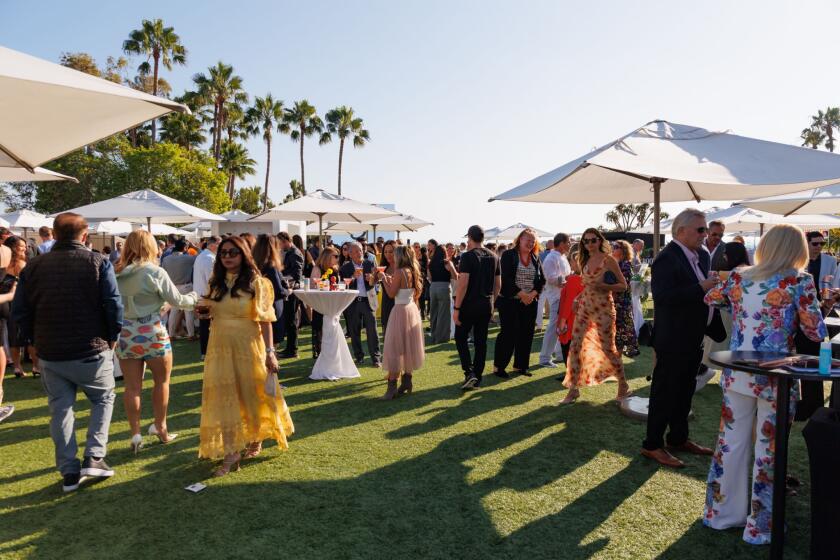GARDEN FANATIC:A plant forever young
- Share via
“Hyacinths hinder young persons from growing ripe too soone.” “” John Parkinson
“Today as in the time of Pliny and Columella, the hyacinth flourishes...” “” Edgar Quinet
?
Catharine was down south”¦ immediately uninterested in the moment, I mindlessly changed the television to “The Clash of the Titans,” a fantasy film I had endured numerous times. The mythological tale, however, inspired me to recall the Greek legend of Hyacinthus; a passionate story of friendship, jealousy, treachery and remembrance.
Hyacinthus was an extraordinarily beautiful youth whom Apollo appreciated much. Zephyr, a jealous rival, killed Hyacinthus. The myth recounts that wild hyacinths sprang and flourished from the blood of the slain boy, the plants always bending toward the ground; a reminder of Apollo’s eternal grief.
Turkey introduced the hyacinth to Europe in the 16th century. It quickly became the latest continental plant craze and has retained popularity as a garden plant over the centuries. The original four colors of red, blue, white and yellow have been joined by 2,000 named cultivars. Hyacinths are a colorful and fragrant presence in the spring; they can even be forced to bloom in the winter if one is in need of cheering.
When purchasing hyacinths this month, be aware that the size of the flower spike is directly related to the size of the bulb (I’ve heard that one before). The largest bulbs should be reserved for use in containers, while smaller bulbs are fine for use in the garden. Flowers tend to become smaller in succeeding years, but will maintain their same color and fragrance. Bulb food is the answer to maintain maximum flower size, as hyacinths are greedy feeders.
Hyacinths look best when planted in clumps in the garden, not in a huge mass of color. They may be planted among low-growing perennials or bedding annuals. Beneath a small specimen tree, bulbs of a single color, are truly spectacular during March and April. Since hyacinths have heavy and delightful scents, their location may be dependent on your reaction to the possibly cloying scent. Plant larger bulbs six inches deep, smaller bulbs four inches.
Hyacinths planted in containers should be potted in a potting soil with the tip of the bulb near the surface. Initially, the bulbs should be kept in the shade and covered with thick mulch. When the tops show, place the plants in full sunlight.
Hyacinths also force well in water, in special hyacinth glasses, the bottom filled with pebbles and water. They mustn’t be hurried until well rooted... keep them in a dark, cool place until roots fill the bottom of the glass. Once the top growth appears they may be moved into light and then placed in a sunny window when the leaves are uniformly green.
Like many bulbs, hyacinths have tiny barbs on their outside surfaces that can be irritating; always wash your hands after handling. Plants growing in wet soil may occasionally wilt and die from either bacterial soft rot or a fungus rot. The bulbs become soft and should be discarded. If these bulb rots become widespread after several years of continuous planting, do not replant with hyacinths for several seasons.
Apollo’s love for Hyacinthus was based on the boy never achieving “ripeness.” He desired the impossible “” unchanging youth. As for me, I am blessed with my unchanging love for Catharine (and bulbs).
All the latest on Orange County from Orange County.
Get our free TimesOC newsletter.
You may occasionally receive promotional content from the Daily Pilot.









